April 2022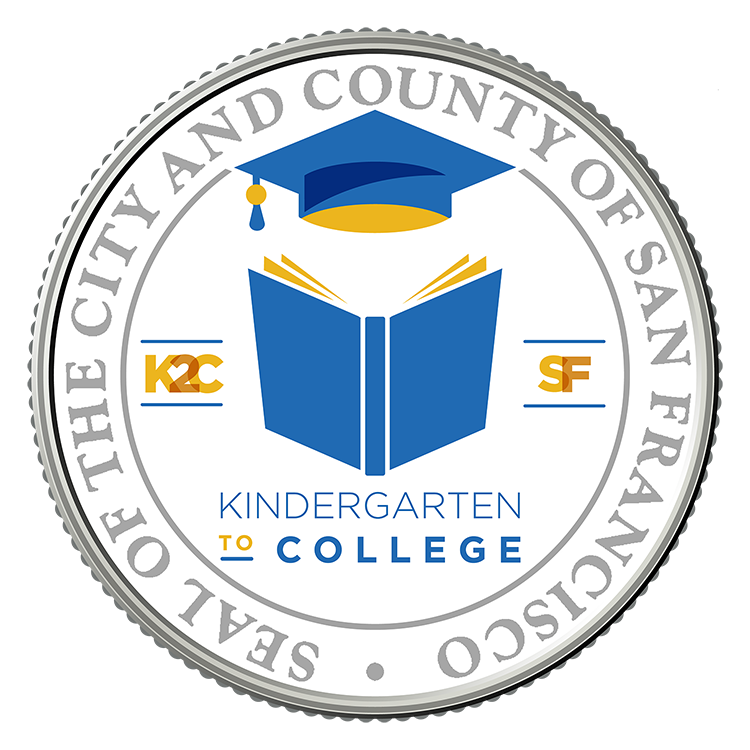
In 2011, the City and County of San Francisco launched the first universal, publicly funded Child Savings Account (CSA) program in the country, Kindergarten to College (K2C). The program automatically opens a savings account for every child entering kindergarten in the San Francisco Unified School District (SFUSD) in their own name, intending to foster college aspirations from their first day of school. Each child receives $50 from the City and can earn additional incentives as they begin to save in the account.
In March 2020, K2C launched an equity incentive, called the “I Am the Future” campaign designed to accelerate targeted asset-building for students experiencing the greatest barriers to opportunity. To best reach these students, K2C selected 9 elementary schools from SFUSD’s PITCH initiative, a program aimed at closing the opportunity and achievement gaps for students facing systemic and persistent barriers to equity, in particular from the Black student population.
The goal of this incentive was two-fold: first, to test whether providing a more generous initial deposit and higher incentives could more effectively spur savings and college aspirations; and second, to employ and test a variety of engagement strategies to reach families with students least likely to attend college. In addition to the $50 seed deposit, students were given $150 in their accounts, and could earn an additional $300 by making two separate contributions of at least $5.
Since launching in 2020, the approximately 1,000 families eligible for the “I am the Future” campaign now have $272,693.20 saved in their K2C accounts. Despite the pandemic, families in our nine schools have saved $16,000 of their own money into their accounts. Family engagement continues to grow, and in many cases exceeds engagement in other schools with much higher income families.
K2C has shown that a well-designed program can help families at all income levels save for college. The successes of the “I Am the Future” equity incentive campaign point to the most effective engagement strategies for reaching low-income families least likely to attend college, and lay the foundation for our continued work to transfer wealth and build assets for low income communities of color in San Francisco and beyond.
Under the leadership of Treasurer José Cisneros, in 2011 the City and County of San Francisco launched the first universal, publicly funded CSA program in the country. Kindergarten to College (K2C), a program of the San Francisco Office of Financial Empowerment (OFE), builds off research that found that saving even small amounts for college can improve the chances a student will attend college. Students with a savings account are up to seven times more likely to attend college than those without – regardless of the family’s income, race, or educational attainment. Further research has found that savings is also linked to increases in math scores, increased parental expectations, and the development of a “future orientation.”
To maximize their impact, K2C accounts have several unique features. They are:
- Universal – all students receive an account regardless of income, immigration status and living situation
- Automatic – accounts are opened automatically without any parental involvement or action
- Accessible – families have multiple ways to contribute to accounts including direct deposit, bill pay, mail, and in-person with cash
- Publicly funded – accounts are initially seeded with $50 in City money
- Incentivized – families can earn incentives by saving or engaging with their accounts
- Embedded in curriculum – students and parents gain opportunity to learn about account, check their deposit or make a deposit as part of SFUSD programming
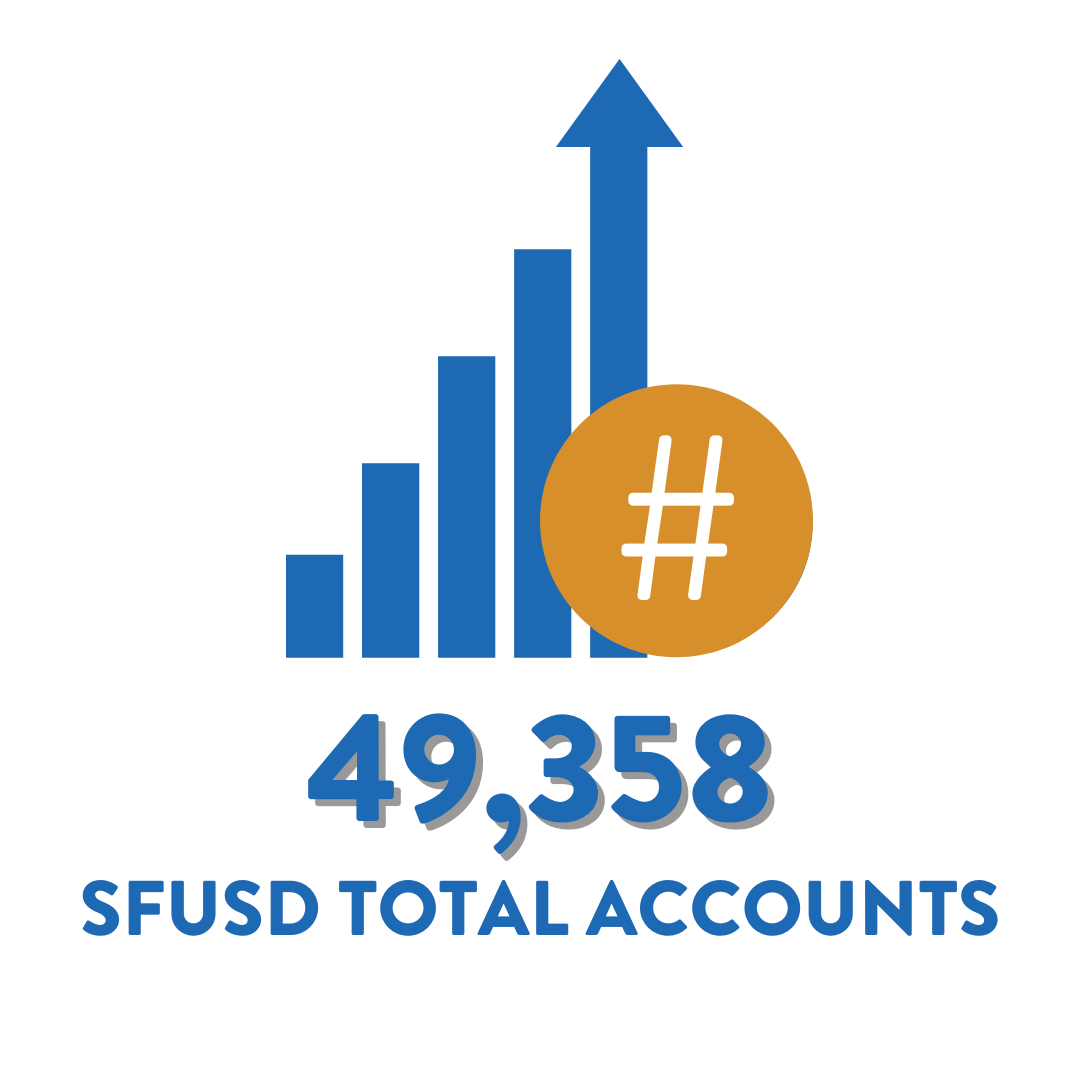
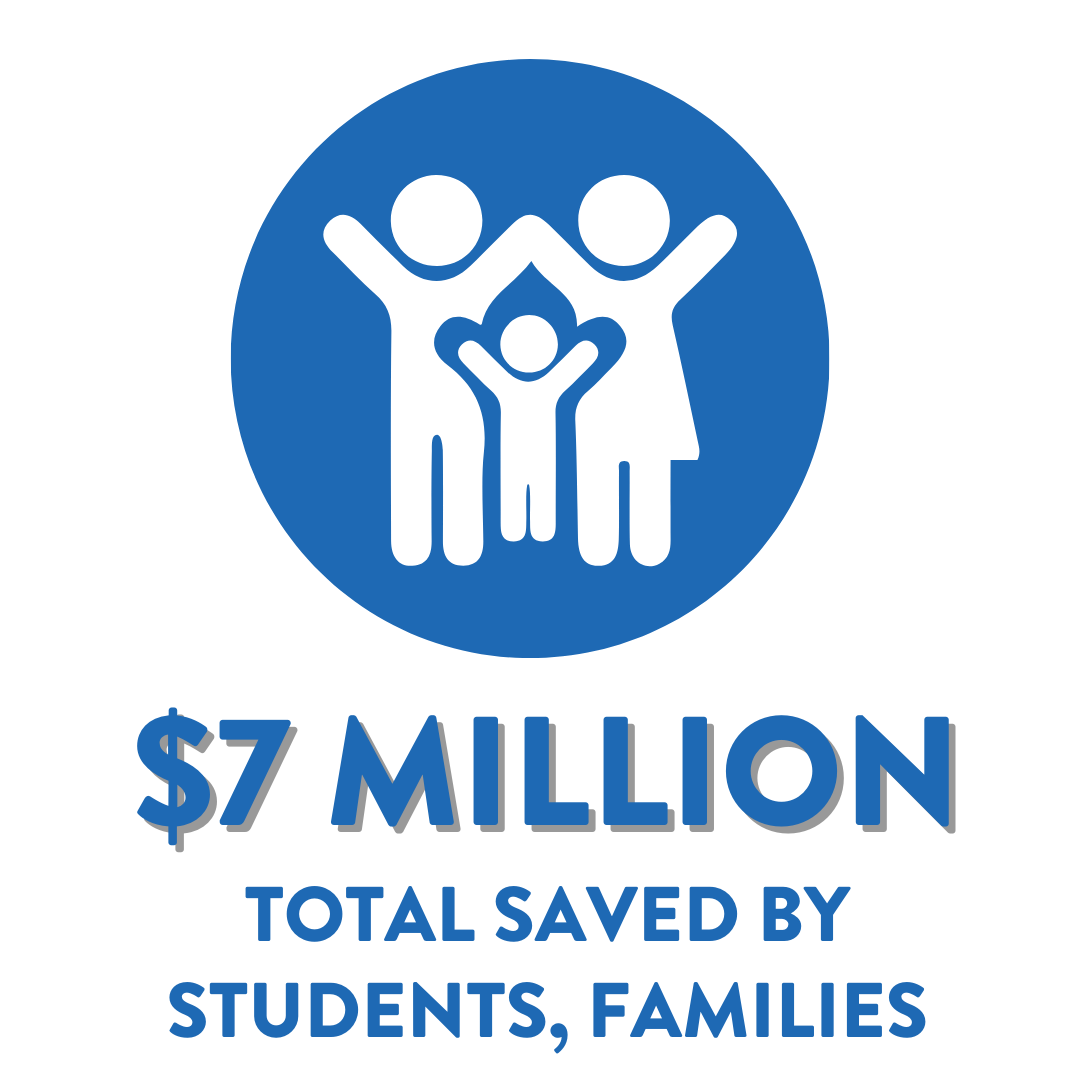
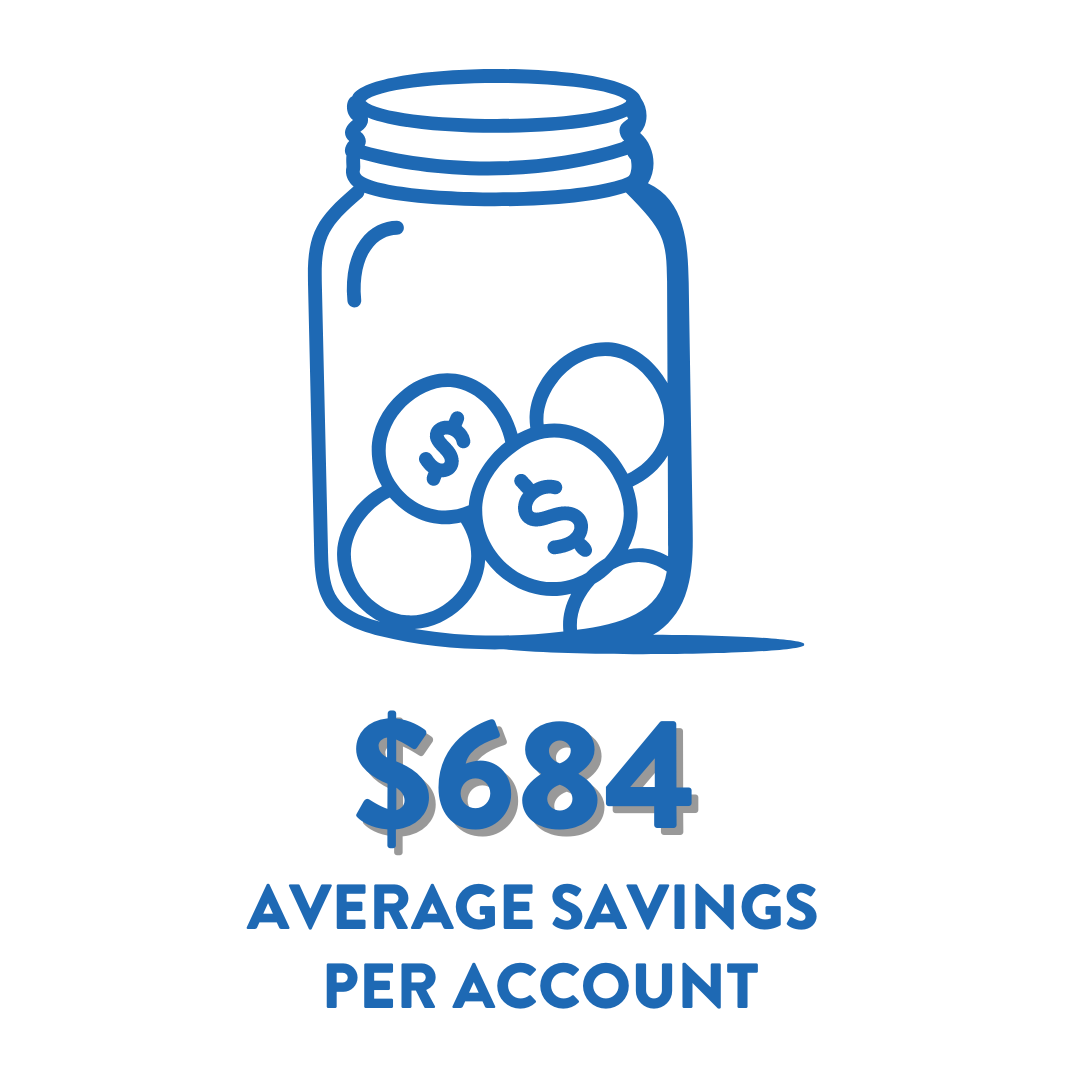
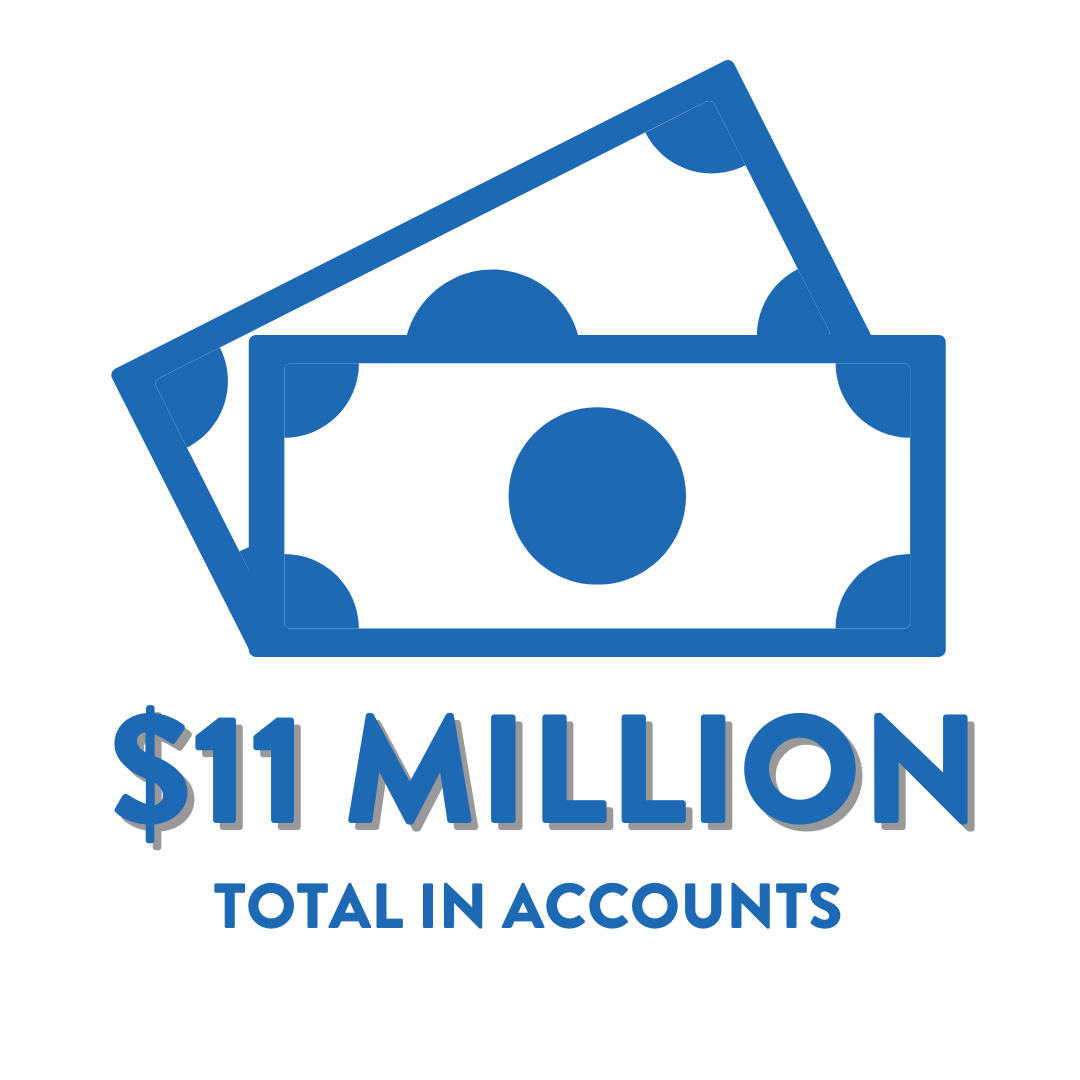
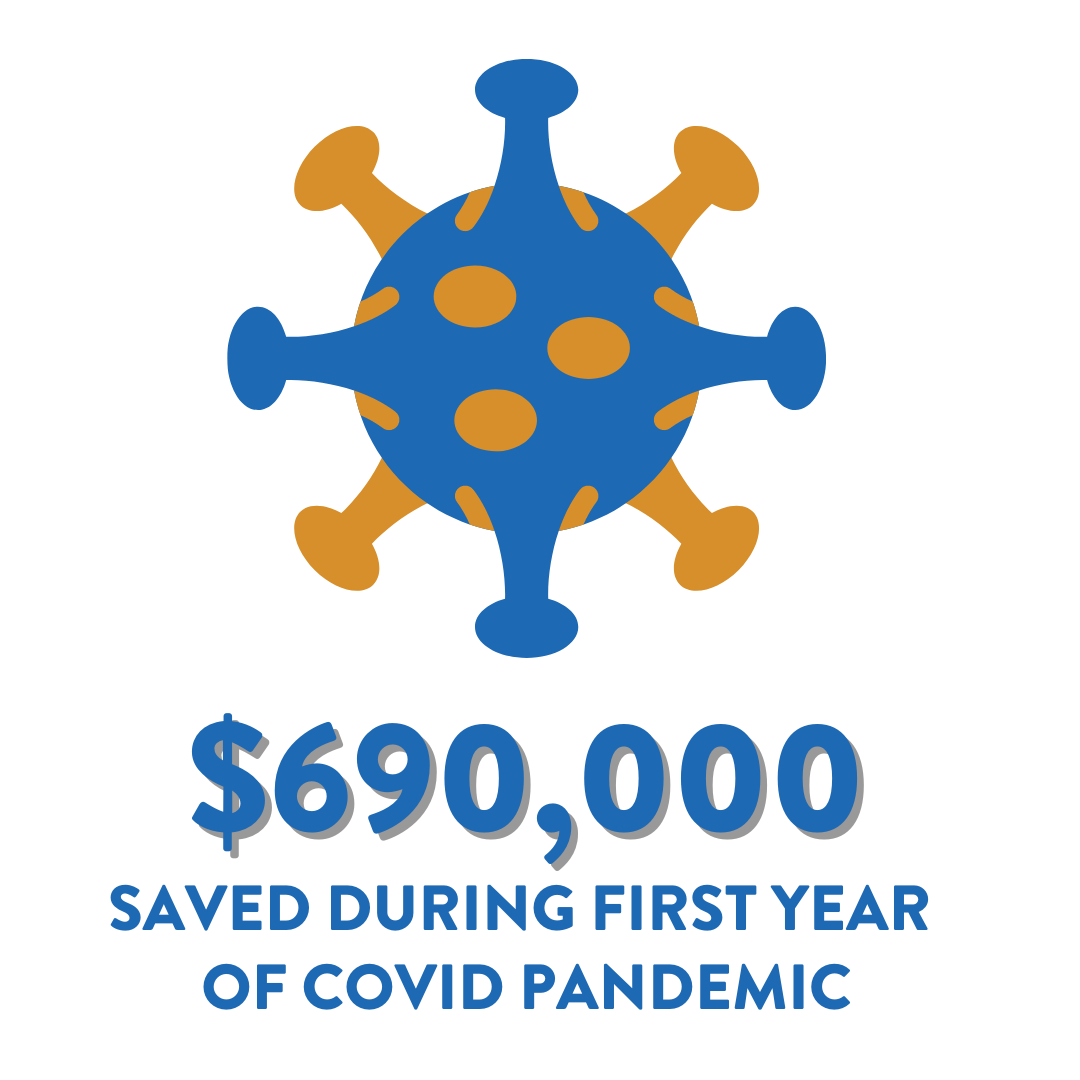
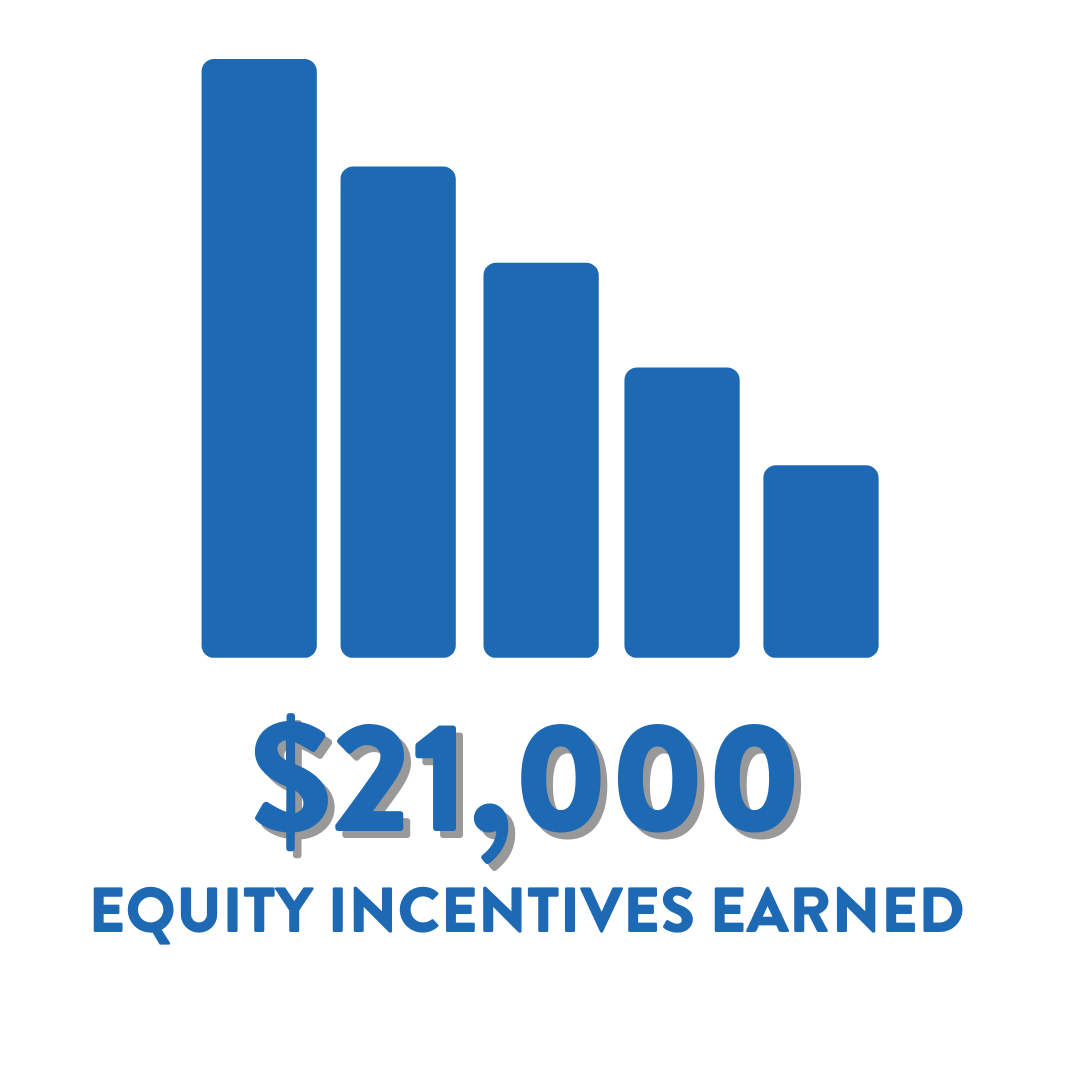
To date, more than 49,000 families have saved $7 million of their own money into their K2C accounts. Including City seed deposits and incentives, San Francisco families have nearly $11 million saved for college. Families that have made at least one contribution to their children’s K2C accounts have saved an average of $684. Approximately, fifty percent of savers qualify for free- or reduced-price lunch, equivalent to their representation in the school district as a whole. The total amount saved by families in K2C accounts has increased steadily year-over-year. Despite the pandemic and remote learning, in school year 2020-2021, families saved $690,000 dollars, an increase of fourteen percent over the previous year. The latest incentive helped more than 80 students from some of the lowest income families save and earn over $21,000 in equity incentives.
K2C was created to give every child and family the ability to dream about and save for college, with a specific focus on reaching families and students who were least likely to save for and attend college. While our program is universal, for all students in our public school system, K2C focuses outreach efforts on low-income communities, communities of color, immigrant communities, and communities where fewer adults have college degrees. To reach these families and communities, K2C has offered more seed money for students qualifying for Free and Reduced Price Lunch, performed outreach at target schools, neighborhoods and cultural and affinity group meetings, and partnered with organizations with deep roots and cultural competency within these communities.
(Parent of two elementary school K2C students)
With support from the California Student Aid Commission (CSAC) starting in school year 2019-2020, K2C embarked on an equity incentive, called the “I am the Future” incentive to test whether providing higher incentives could spur savings and college aspirations for families who were least likely to save for college. K2C worked with SFUSD to align our goals with their equity work to reduce the achievement gap. Together, we decided to focus this incentive on designated “PITCH” schools (for Professional Capacity, Instructional Guidance, Transformative Mindsets, Collaborative Culture, High-Quality Staff), a set of elementary schools with large opportunity gaps for Black students.
Aimed at addressing systemic barriers to equity, SFUSD aptly articulates the need for their multi-year PITCH initiative: “African American students in the district have long faced barriers to academic opportunity and success, including high rates of poverty as well as systemic bias leading to high rates of disproportionate discipline, low expectations of academic ability, under-resourced schools and supports, and a lack of trust and collaboration between schools and African American parents and community. Because of these and other systemic barriers and challenges, African American students are more likely to be below grade level, more likely to be chronically absent from school and more likely to feel disconnected from school, ultimately leading to lower graduation rates than other subgroups.”
Of the 20 schools within SFUSD’s PITCH initiative, the K2C incentive campaign identified 9 elementary schools concentrated in San Francisco Supervisory Districts 9, 10, and 11, particularly in the Mission, Excelsior, and Bayview/Hunter’s Point neighborhoods. These neighborhoods include some of San Francisco’s highest concentrations of Black, Latinx, and Pacific Islander residents, a high concentration of households with children, and many immigrant residents with Limited English Proficiency (LEP).
In addition to the $50 used to seed the account, K2C deposited an additional $150 in the accounts of all students in first and second grade in the 9 PITCH elementary schools (listed below) and then allowed families the opportunity to earn an additional $300 by making two deposits of $5 into their accounts.
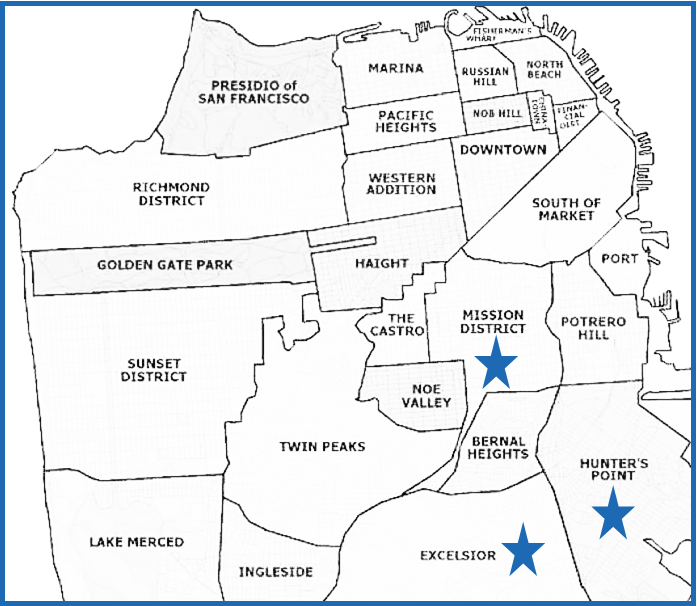
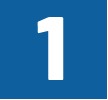 March 2020
March 2020
Just as COVID-19 and shelter-in-place orders hit, K2C launched “I am the Future” Incentive at 9 of SFUSD’s PITCH schools concentrated in neighborhoods in Southeast San Francisco.
- Bryant Elementary School
- George Washington Carver Elementary School
- Cesar Chavez Elementary School
- Dr. Charles Drew Elementary School
- Bret Harte Elementary School
- Malcolm X Academy
- John Muir Elementary School
- Sanchez Elementary School
- Paul Revere K-8 School
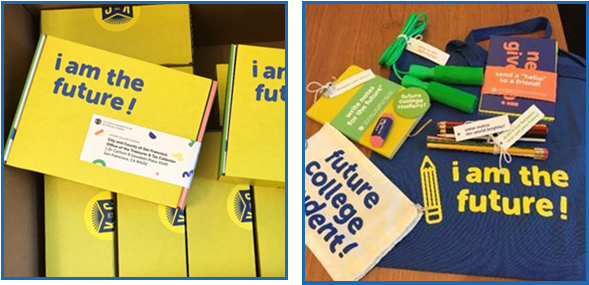
 January 2021
January 2021
To promote the incentive, K2C sent personalized, branded Care Kits to the homes of families, including school supplies and a note in the primary language spoken at home.
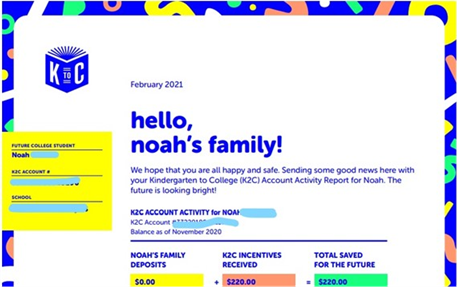
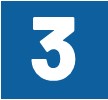 January 2021
January 2021
Care Kits were followed by a colorfully designed letter and activity report explaining the “I Am the Future” incentive, listing current K2C account balance, and encouraging savings.
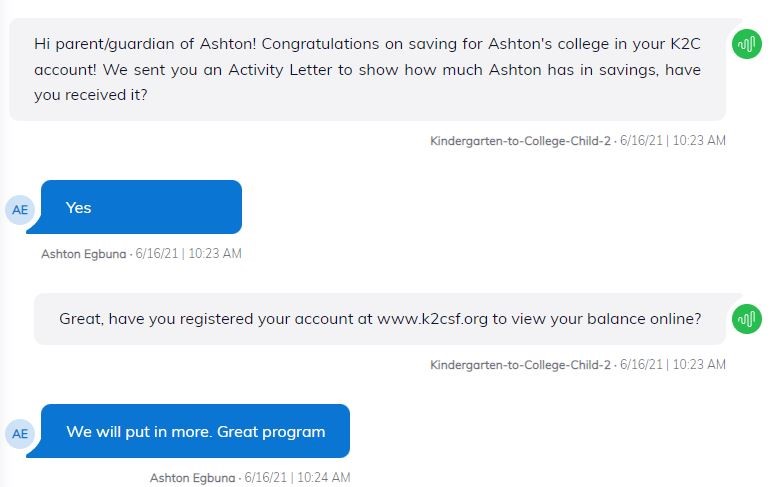
 February 2021
February 2021
K2C launched digital communication campaign, primarily opening two-way text message communications to respond to parents’ questions about their accounts and the incentives.
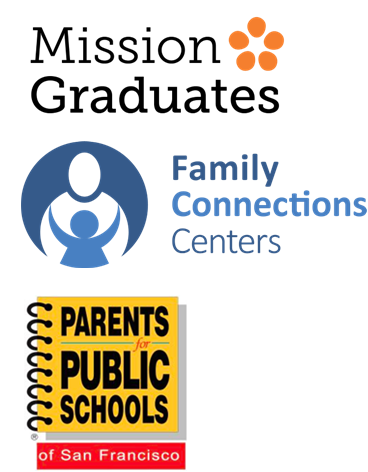
 February 2021 to Present
February 2021 to Present
For this campaign, K2C partnered with three community-based organization partners, Mission Graduates, Portola Family Connections, and Parents for Public Schools to complete one-on-one outreach and other creative engagement strategies. Their long-standing, deep connections to the PITCH school communities helped ease the concerns of some parents about the K2C program and the “I Am the Future” incentive.
(Parent of elementary K2C student)
As a result of this “I am the Future” campaign outreach efforts, as of January 2022, families had earned additional incentives by depositing a total of almost $16,000 into their K2C accounts. Among the 81 families actively saving and taking advantage of the incentives, families have earned $21,150 in equity incentive funds, in addition to the initial wealth transfers of $150 into the account of every student within the target population and other standard program incentives available for all K2C participants. Across seed funds, incentives, and family contributions, students within this targeted program now have a cumulative $ 272,693.20 in wealth in their K2C accounts. Thus far, we have seen 216 families register to view their K2C account balances online for the first time, ensuring that they know about and are engaging with the account.
As stated, the Equity Incentive gave families the opportunity to earn up to $300 by making two separate contributions of at least $5. Under this portion of the program, 81 of the 1,041 eligible students made sufficient deposits to be able to earn the equity incentive in their accounts. Currently among this eligible group, this brings the number who have saved with K2C up to 203 students overall, including those who saved prior to the campaign or saved amounts less than $5. This reflects an exciting increase in the saver rate for this population of students from 11% to 19% through engagement with the incentives.
The number and amount of deposits and incentives earned, as well as account engagement, has increased over time as the campaign got under way and reached peaks in late spring 2021, indicating that all the outreach – the care kit, letters, texts and personal phone calls – was working. In reviewing the data, the most exciting development occurred in Winter of 2021, when deposit amounts spiked far beyond previous levels following 2 additional text messaging campaigns in November 2021 and January 2022 and the expansion to add 3rd graders to the existing pilot of 1st and 2nd graders. This indicates growing awareness and momentum for the equity incentive program, as well as the K2C team’s growing effectiveness in harnessing the most potent engagement strategies.
As a pilot aimed at creating greater parity across the wealth gap, we are excited by the outcomes that the Equity Incentive Program is producing. The latest data comparing some key indicators around account balances and deposits shows that our pilot program participants (who in grades 1, 2, and 3 are just starting out in the K2C program and have only had a short time to save) are closing the gap in program engagement with active participants in the district as a whole. Although the average amount of their contributions per deposit may still be lower than those of all active participants in the district, we are heartened that this equity incentive campaign focuses energy and resources in the right place. Particularly encouraging is that our equity incentive families are quickly closing the gap in saver rate with active participants in the district as a whole, showing that with strategic community outreach and incentive structures, these families have just as much enthusiasm and engagement with K2C as their counterparts in non-PITCH schools.
AVERAGE CONTRIBUTION AMOUNT PER DEPOSIT |
|---|
SAVER RATE |
|---|
|
(Spanish-speaking parent of elementary school K2C student)
The “I Am the Future” incentive campaign shows clearly that families in schools with the highest achievement gaps can and will save for college. K2C has identified the following critical lessons learned:
Use multi-pronged approaches to reach families –
The “I Am the Future” campaign leveraged multiple outlets and opportunities to reach and connect with families including mailed care kits, mailed letters and activity statements, text messages, email and in-person phone calls. Using all these channels improved response rate and uptake because it increased visibility and offered more opportunities to connect with families and meet them where they were at. As we enter the second year of the pilot, the continuing uptick in deposits points to the momentum early outreach efforts have generated over time.
Focus on opportunities for two-way communication –
K2C staff and parents found that mediums that allowed two-way communication, like text messages as compared to USPS mail, were most helpful to inform families about the incentive and spur deposits. In the text messages, the K2C team explicitly asked families whether they were interested in making a deposit. Leading with a question helped in multiple ways – it encouraged families to respond and also allowed K2C to gauge familial interest. Once K2C staff knew which families were actually interested in depositing, they could focus their energy on these families, responding one-by-one and working as a team to address barriers and issues that arose. Families were grateful for and appreciative of the individualized responses and assistance that they received via text, which made them more likely to deposit and engage with the program further. In terms of return on investment, an analysis by behavioral research firm Ideas42 of our SMS communication to a random sample of K2C families across the program found that for every $1 invested in our messaging platform, first-time saver families saved $3.16 for college.
Track outcomes that resulted from different communication channels –
Not only did K2C utilize multiple communication channels, we tracked responses and deposits made as a result of the forms of communication and followed up with families to learn which outreach efforts resonated most. This tracking helped K2C analyze what did and, even more importantly, did not work. For example, the care kits were a new tactic, necessary because of shelter-in-place orders and the inability to connect with students and families at school. However, they were expensive and time-consuming to distribute. Though they spread joy, they had less impact than anticipated on deposits. Some families didn’t receive the packages because addresses were out of date and others that did receive them didn’t feel like they had enough information to make deposits.
Make information and guidance on account operations more explicit –
While the outreach campaign sought above all to make K2C seem fun and approachable, many families would have benefited from more concrete details on account operation and guidance to allay fears. In phone calls and follow-up interviews, several families indicated that they were interested in making deposits but stymied by the actual practical steps involved, particularly given limited guidance available in our outreach campaign materials. Other families wanted to make a deposit but were concerned about a bank teller asking for a social security number or what would happen to the money if their child did not attend college. Similar barriers have come up in other research about K2C. In the future, K2C plans to provide more details and set better expectations around account operations to build more trust in the program and increase families’ buy-in.
Nothing beats the human touch –
Based on the tracking data and also in-person interviews and impressions, K2C found that the most effective outreach strategies were those that leveraged in-person connections. These strategies included working with culturally competent CBOs to call families one-on-one. It also included less labor-intensive tabling at local schools to meet parents and spread the word about the program and the incentive.
Incentives and outreach work! –
The most important lesson-learned from the “I Am the Future Campaign” is that extensive outreach and large incentives can support San Francisco’s lowest income families to save for their children’s future and build up a college-going mindset, even during a time of economic hardship and remote learning. Based on this campaign, 216 families registered their account online and looked at their balance and 81 families took the next step to save in their account and earn incentives.
K2C continues to believe in and invest in the “I am the Future” initiative. The deadline for students to earn the incentive has been extended through June 30, 2022, and the incredible deposit activity over the past several months shows that families are engaged and outreach efforts are working. Currently all first, second and third graders at PITCH schools have access to the additional incentive. K2C’s outreach plan for this year has integrated all the lessons learned from last year’s programming – providing more explicit details about the incentive and how to make deposits on our website, performing outreach via text and email, and working with community partners to reach and engage families.
This initiative is part of K2C and OFE’s overall strategy to deepen investments in assets for low-income and Black, Indigenous, People of Color (BIPOC) families. While one option is continuing with equity-based incentives, another option is to move towards much larger seed deposits, akin to baby bonds. Baby bonds are fundamentally race-conscious and designed to address a structural problem: intergenerational wealth inequality resulting from past and present government policies and private actions that helped to boost wealth for some while denying and erecting barriers to wealth for others. Rather than offer all families a seed deposit of $50 with larger incentives for saving for some, San Francisco could more aggressively fight to increase racial wealth equity by increasing the size of seed deposits for low-income and BIPOC students and investing this funding in ScholarShare 529 accounts. As California’s tax-advantaged investment accounts designed to encourage saving for future educational costs, ScholarShare 529 accounts would help families receive a greater return on the money they save.
(Spanish-speaking parent at focus group)
Already there is momentum towards CSA programs that target some students for larger seed deposits and other support. For example, Oakland Promise seeds $500 in their Brilliant Baby college savings accounts for children from households meeting income eligibility for safety net programs. Similarly, the newly launched San Joaquin County Child Savings Account pilot program will provide children enrolled in subsidized preschool programs with a $750 seed deposit, which is expected to grow by a minimum of $1,800 by the time the child graduates high school. At the state level, California allocated nearly two billion in its 2021-2022 budget to expand the CalKIDS statewide child savings account program, creating new ScholarShare 529 accounts with a seed deposit of $500 for low-income public school students grades 1-12, with students in foster care or experiencing homelessness receiving an additional $500.
This movement to accelerate asset-building for low-income children is exciting. Race, ethnicity, and income should not be predictors of postsecondary access and success, and it is imperative to reduce, if not eliminate, the staggering disparities that drive the racial wealth gap. K2C has been a pioneer in the CSA field and can continue to lead by demonstrating that transformational wealth building during childhood is possible. This may even include combining a K2C baby bonds-style program with guaranteed income (recurring, unrestricted and unconditional cash transfers) for our most disempowered and disenfranchised families – complementary policies that could work together to reduce income and wealth inequality, while creating dignity and agency.
At its heart, K2C offers the promise of building aspirations. Our children and their families should have the ability to dream big, and the resources necessary to achieve those dreams. The “I am the Future” incentive helped families focus on their future even when the current reality was grim, as has been the case for many of us over the last two years. As one parent put it:
“We as parents sometimes discourage our students to follow up their dreams and the message that we give to them is very important. Believing in them can help them achieve their dreams.”
(Spanish-speaking parent of K2C elementary student)
